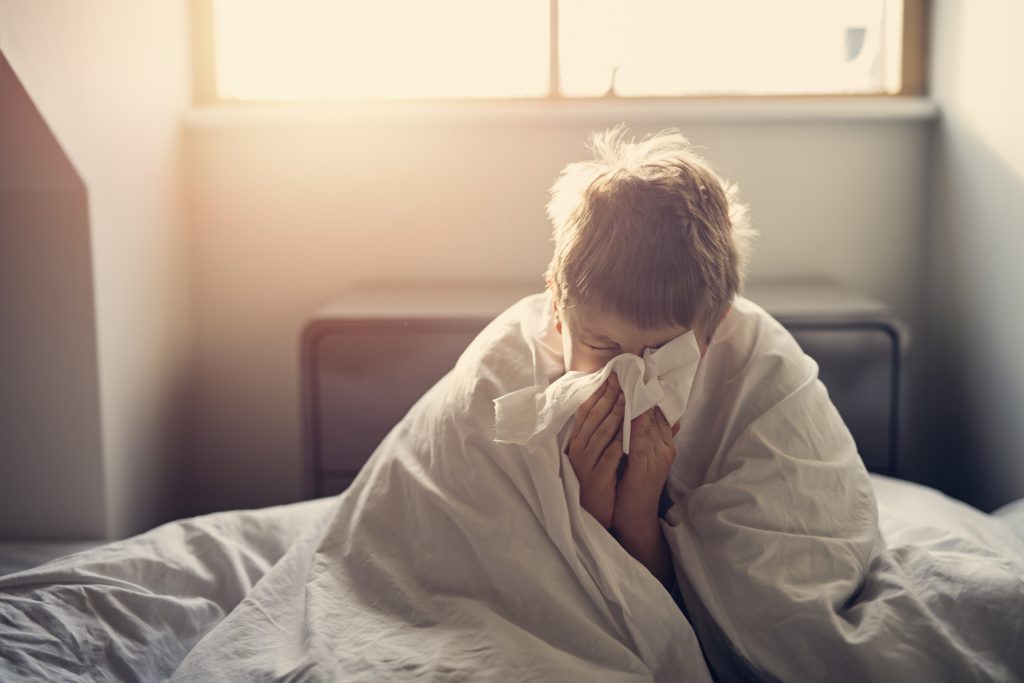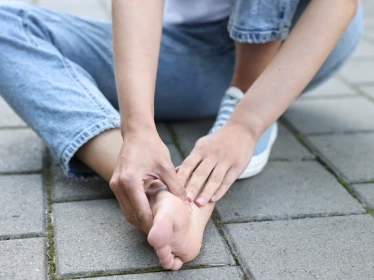
What is the common cold? What causes it?
Symptoms of a common cold are:
- Sneezing
- Stuffy nose
- Runny nose
- Sore throat
- Coughing
- Watery eyes
- Fever (usually low grade and last no more that 3-5 days)
These symptoms usually last for a few days, but children with sensitive airways may experience symptoms for much longer.
Most cases of the common cold are caused by viruses. The virus is typically transmitted via airborne droplets (aerosols), direct contact with infected nasal secretions, or contaminated objects (e.g. toys). Your child may get the infection from close contact with infected family members or another child in the daycare centre. Children can get up to 4-6 episodes of the common cold in a year, more frequently if he or she is in a preschool or daycare centre with other children.
What are antibiotics? When are they used?
Antibiotics are medicine used to treat infections caused by bacteria. They are used to kill bacteria that cause the infections, or slow down their growth so that the body can get rid of them. Illnesses caused by bacteria include bronchitis, urinary tract infections, ear infections, pinkeye, etc.
Why aren’t antibiotics prescribed for a cold?
Antibiotics do NOT kill viruses that cause colds. Common childhood illnesses such as upper respiratory tract infections (e.g. cough, common cold, sore throat), stomach flu (e.g. diarrhoea, vomiting) are caused predominantly by viruses and your doctor does not usually prescribe antibiotics for your child in such situations. More than 200 viruses can cause the common cold but the most common is Rhinoviruses. When viruses that cause colds first infect the nose and air-filled pockets in the face (sinuses), the nose makes clear mucus. This helps wash the viruses from the nose and sinuses. After 2 or 3 days, mucus may change to a white, yellow, or green colour. This is normal and does not mean you need an antibiotic.
What could happen if my child takes antibiotics when they have a cold (i.e. when they don’t need it)?
As previously discussed, children with the cold do not need antibiotics as these are caused by viruses.
We have lots of good germs (bacteria) in our body and on our skins. They are like soldiers that guard against the bad germs (both viruses and bacteria) that may cause infections. If the antibiotic is prescribed unnecessarily, it can kill the good germs (bacteria) in our body and weaken our defence system. This can lead to the child catching an infection more easily.
Antibiotics are not without risk. The side effects include diarrhoea, vomiting, tummy bloatedness, loss of appetite, or even rash or an allergic reaction (eye/lip swelling, wheezing, hives).
Overuse or unnecessary use of antibiotics has led to antibiotic resistance. Bacteria adapt over time and become “super bacteria” or “superbugs.”, evolving to a point where antibiotics no longer work on them. They pose a big threat, because there aren’t any medicines to kill them.
The best way to help reduce this antibiotic resistance is by being smart with antibiotics.
- Trust your doctor if she says you don’t need them.
- Don’t take them for a viral infection.
- Do not start antibiotic without the doctor’s advice
- Only take the ones your doctor has prescribed for you.
- Take them as directed.
- Don’t skip doses.
- Take them for the full number of days your doctor prescribes.
- Don’t save them for later.





